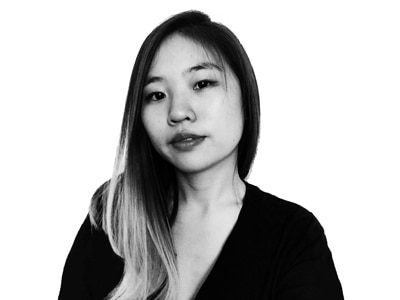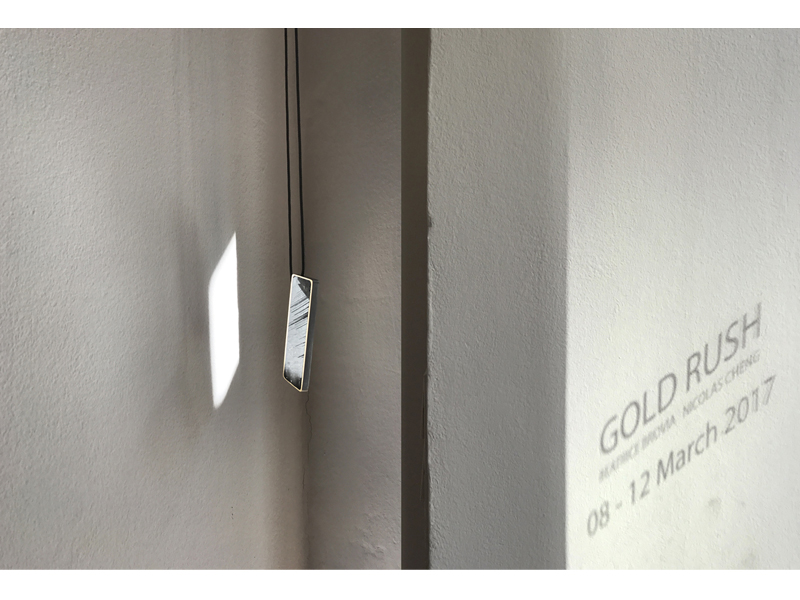
Gold Rush, an exhibition that recently opened at Maurer Zilioli Contemporary Arts, delves into the controversial material culture of gold through the lens of consumer electronics. This exhibition is the brainchild of Beatrice Brovia and Nicolas Cheng, the two halves of the collaborative research practice known as Conversation Piece. In this interview, we talk about how gold, a conflict mineral and object of desire, has infiltrated our daily lives in unexpected ways.
Olivia Shih: Beatrice, you have a bachelor’s in industrial design, and, Nicolas, you have a BA in interior design and environment architecture. But both of you migrated toward craft and jewelry for your master’s degrees. Why the transition?
Beatrice Brovia: Craft, especially jewelry, was never in the picture growing up, nor when I was a student in interior architecture at Politecnico in Milan. Nonetheless, even back then, I was always interested in the relationship between objects, the built environment, materiality and the body, and in forms of design that were challenging and raised questions about the ways we live with things and with one another.
In Italy, I was influenced by the traditions of radical and postmodern design—it’s a luxury to have studied with some of the great designers-thinkers who initiated these movements. I think this background is not irrelevant to why, later on, I decided to focus on craft and jewelry: These disciplines eventually offered me all I needed to further investigate subjects and interests that I had carried with me all along.
The transition to the field of jewelry for me happened at the time I was a first-year master’s student in the industrial design department at Konstfack. At a crucial moment in my personal development, I became aware of a very much alive, critical, and challenging discourse on the crafts after an elective course that I took with Prof. Karen Pontoppidan at Ädellab, the Jewellery + Corpus department. It was an epiphany: I consequently made the choice to change the course of my studies and eventually graduated from the Jewellery + Corpus department in 2009. Today, I’m still working in and around this beautiful field that never ceases to both upset and push me forward.
Nicolas Cheng: Having a background in interior architecture and industrial design, I moved in 2008 to Stockholm to pursue my master’s studies at Ädellab, Konstfack, a program I was naturally drawn to because of its experimental nature when it comes to processes, material investigation, the inherent focus on subverting hierarchies of value, and challenging societal norms through craft (specifically through the mediums of jewelry, corpus, and everyday objects) in order to understand what material culture is in our society.
The reason I chose Sweden is because, geographically, it seemed to me more unfamiliar and refreshing. Despite not being at the center of Europe, it’s very active from an artistic and creative viewpoint. After several years living in London, the Netherlands, and Italy—at the time considered the epicenters of design—moving north was for me an opportunity to reflect on and expand my artistic practice in a new context.

In 2011, the two of you founded Conversation Piece, a collaborative research practice invested in material culture and craft discourse. How did the two of you meet and begin this collaboration?
Beatrice Brovia and Nicolas Cheng: We met as master’s students at Ädellab, Konstfack. The fact that we shared a similar background—both having studied interior architecture and design prior to jewelry and craft—meant that we therefore had similar questions and were motivated to test the boundaries of the field in relation to other disciplines as well. These similarities eventually led us to work together.
That said, despite the similarity in our path of studies, we’re very different artists, with different ways of questioning things, different rhythms, different experiences and opinions: We often joke that our “Conversation Piece” is more of a “Clash Piece,” as we constantly challenge and question each other in the process, through dialogue, disagreement, and making.
There’s always an element of friction in our collaboration, which is, we believe, essential—the main reason, perhaps, why we work together. In this way, we refine our thoughts, the process, and the eventual outcome, both working against and with one another.

How would you define “material culture” and “craft discourse”? Why should the average person care about these topics?
Beatrice Brovia and Nicolas Cheng: These are fields of knowledge that we study and refer to as makers and researchers. We see our practices as constant dialogue with the world around us and with theory as well—particularly in material culture (which we think of, very simply put, as that interdisciplinary branch of anthropology studying the relationships among materiality, things, and people in complex social, economic, and political networks).
But at the end of the day, while it’s important for us to be and stay informed, to refine our thinking and, thereby, our making, we don’t think that the audience needs to know all of that when approaching or experiencing our work. It’s not necessary to the personal understanding of a piece.

You presented a new body of work, Gold Rush, with Ellen Maurer Zilioli during Munich Jewelry Week. How did this exhibition come into being?
Beatrice Brovia and Nicolas Cheng: In November 2014, Ellen visited an exhibition we made, at the invitation of Robert Smit, at the gallery De Zaal in Delft. The exhibition, dé · cor dé · cor, gathered for the first time all chapters from our Conversation Piece collaboration, alongside works from our individual practices. At the same time, Robert presented his solo show, From the Light of Delft to the Sparkle of the Dolomites, at De Zaal.
Ellen visited both exhibitions, and we have been in contact with her since. A little over a year ago, we started discussing collaboration possibilities in more detail, and we suggested Gold Rush for the exhibition in her project space in Munich. Gold Rush is the latest development in our collaboration; the first piece was originally commissioned by Stedelijk Museum ’s-Hertogenbosch, for the exhibition CULT, curated by Current Obsession.

Gold, as you’ve noted, is a controversial material and plays many roles. But in Gold Rush, you highlight the role of gold in consumer electronics and telecommunications. Why choose this specific persona of gold?
Beatrice Brovia and Nicolas Cheng: Gold Rush thematically developed from an earlier project, Kino, which we presented in March 2014 in Munich. One of the pieces in the project, a brooch, reflected on how screens, especially those of smartphones, represent our main interface of exchange and communication with the world, as well as a source of entertainment and information.
Furthermore, the brooch backing—made of gold and tantalum—referred to conflict minerals and to how they are closer to us than we may think: We carry these minerals in our pockets, as they form the foundation for functioning electronic devices, our mobile phones above all. The brooch, at once reflective and transparent, subtly points to this aspect: We can see through it, but it also shows our reflections, implicating us in a material system based on demand, extraction, supply, and consumption, and whose exploitative mechanisms are very hard to control, let alone escape.
For Gold Rush, we focused on gold, starting with its function and use in today’s industrial production of consumer electronics, as well as for space exploration. Without letting go of its ambiguous connotations and loaded history as a material, we were fascinated by its “domesticity”—by how much we rely on this material, at once controversial and desirable, in our daily life, without always being aware of it.
For this chapter, we looked at domestic and industrial electronic waste as a source from which we “mined” gold, as well as other materials. Our desire for and consumption of always newer, more updated electronic goods, combined with the producers’ own interests in pumping out consumer goods and electronics with an embedded expiry date, results in huge amounts of waste. Gold, along with other minerals, is at the base of the functionality of these goods; gold is hidden into the secret workings and mechanisms of our appliances and woven into our daily interactions with them. By “mining” electronic waste for gold and other precious metals and rendering these visible on the body through jewelry pieces meant to adorn, the aim is to discuss the gold of our time and its cultural meaning and power.
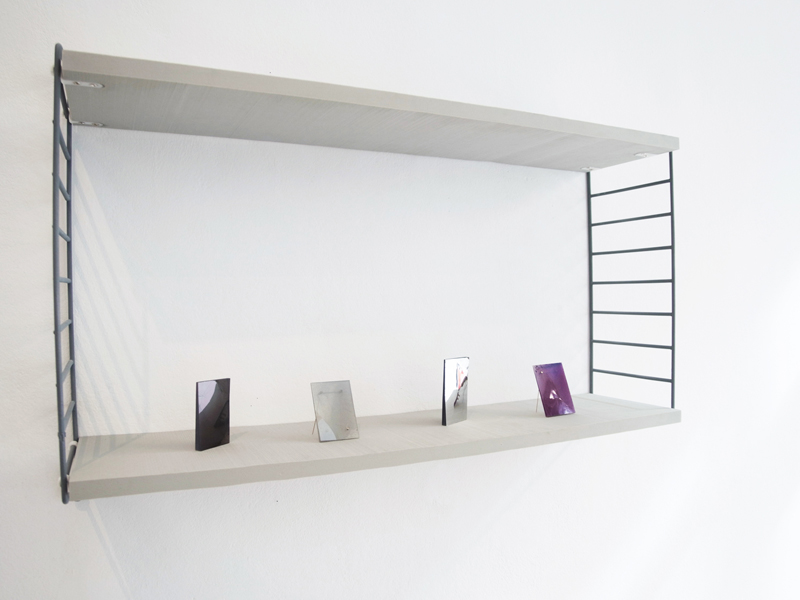
Commercial gold mining typically involves the use of heavy machinery and toxic chemicals, but you “domestically mined” for gold in e-waste. Could you describe the process and your experience of extracting gold from everyday electronic objects?
Beatrice Brovia and Nicolas Cheng: In this project, we have been using both “domestic” and “industrial” mining methods to extract minerals and other materials from e-waste.
Some of the e-waste materials were collected from acquaintances and local companies, and we further processed them partly in our studio and partly with the support of specialized laboratories here in Sweden and abroad.
For larger amounts of refined e-waste metals, we have collaborated with a specialized e-waste recycling company in Asia. It’s one of the first companies to begin dealing with e-waste in the 90s, with a focus on environmental and sustainable alternative methods to develop e-waste materials. This type of e-waste comes directly from big electronics manufacturing companies and producers—it’s production e-waste.
Working with these materials, we were surprised by the many similarities we discovered between jewelry and electronics, both in their materiality and aesthetics and in the way they function when activated by the body.
Commonly, gold is extracted from the depths of the earth—a process that, as we know, is obscenely exploitative of people, resources, and the environment; but we also realized how extracting this metal from mountains of potentially hazardous e-waste doesn’t render it, the stories that it carries with it, or our relationship to it, any less controversial.
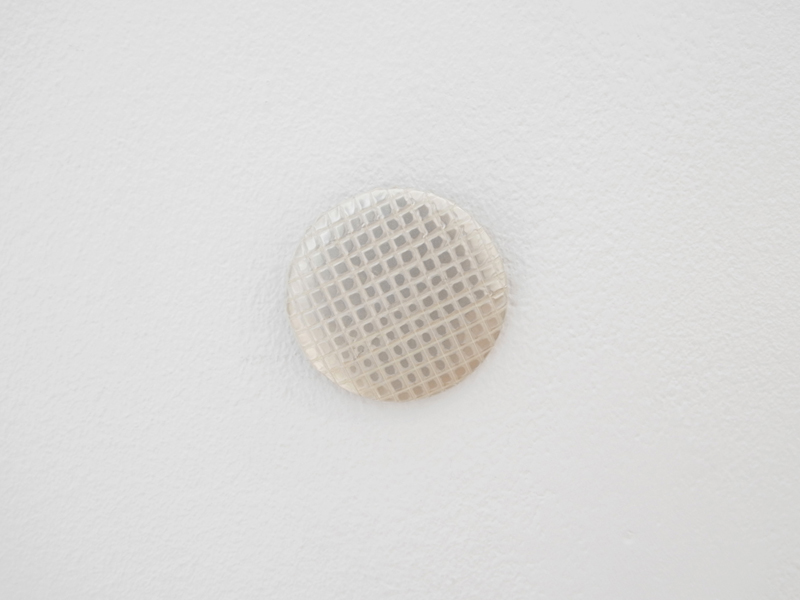
Some of your work in Gold Rush takes gold from e-waste and reinterprets the material in forms that read like sticks and irregular pearls. Why distill the intricacies of consumer electronics into simple, almost primitive forms?
Beatrice Brovia and Nicolas Cheng: In this body of work, we set out to look closely at the relationship between jewelry and electronics, and explore the boundary between adornment and portable technology. What are the similarities? What do these typologies of objects reveal about our bodies and identities, about our desire for interconnectedness and communication? How are we controlled by such things?
To reduce the forms, to refer to jewelry archetypes and familiar shapes (the bead, the button, the pendant on a string, etc.) seemed the only way to go, especially given the complex, not at all carefree narratives imbued in the pieces, and the amount of research—material, technological, and theoretical—we had made to develop the work. In this sense, it also became important that the pieces be clearly wearable, easy to understand and to recognize as jewelry. Just as portable electronics “disappear” in our daily use of them and thus quietly exert their power over us, we thought that the jewelry would become all the more powerful and speak the loudest when its formal language is pared down.

How does our fascination with jewelry overlap with the cult for technology? Like jewelry, the iPhone can signify socioeconomic class and wealth, and the user is often physically and emotionally attached to this object. Can an iPhone be the ultimate adornment in modern society?
Beatrice Brovia and Nicolas Cheng: It could be. Both jewelry and wearable technologies or electronic devices such as the iPhone, Apple watch, etc., function similarly: They mark our bodies and our identities and exert control over us, too. How control is activated over our bodies by these objects is an aspect we have started to explore in Gold Rush.
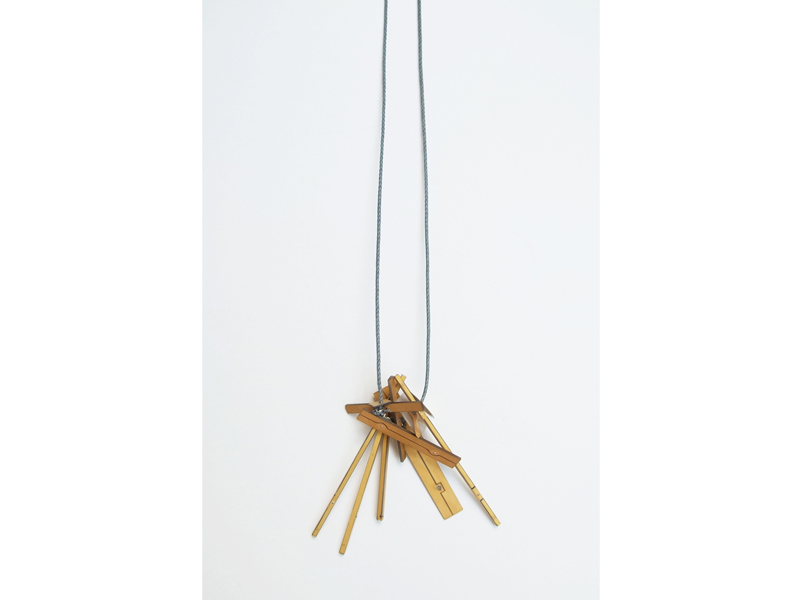
Both of you are based in Stockholm, which is viewed as a cultural center steeped in art and design. What is the draw of this city, and how does your environment inform your work?
Beatrice Brovia and Nicolas Cheng: Sweden, and particularly the cities of Stockholm and Göteborg, is where we have encountered a very much vibrant discourse on Konsthantverk [literally art handwork, or crafts.—Ed.], which has radically influenced our way of thinking through craft and motivated us to challenge craft’s very values, boundaries, techniques, methods, and context.
The two main institutions in Sweden, HDK—The Academy of Design and Crafts, in Göteborg, and Konstfack, in Stockholm, represent valuable platforms for the development and circulation of craft knowledge. To have institutions of this standard committed to craft, and with an emphasis on norm-criticality and craft’s active position in society, makes it so that, every year, new generations of makers enrich, question, and critique the field with their practices.

Have you read or seen anything recently that changed the way you think? Could you share your insights with our readers?
Beatrice Brovia and Nicolas Cheng: Most recently, a series of essays by Ursula K. Le Guin, especially the one in which she introduces the “carrier bag theory of fiction.” It raises many questions of how a habitable world can be imagined and how we can live—together with one another, while also staying with the conflict.
Thank you.
The pieces in this exhibition range in price from $1,030 to $3,900.
***
インタビュー
2017年3月25日
ビアトリーチェ・ブロービア&ニコラス・チェン:ゴールドラッシュ
マウアー・ツィリオーリ・コンテンポラリー・アーツ、ミュンヘン、ドイツ
執筆:オリビア・シー
先日、マウアー・ツィリオーリ・コンテンポラリー・アーツで「ゴールド・ラッシュ」と題された二人展が開かれた。電化製品の原料という角度から、金という異論含みの物質文化を掘り下げたこの展覧会を企画したのは、カンバセーション・ピースの名で知られる、リサーチを中心に活動する二人組、ビアトリーチェ・ブロービアとニコラス・チェンだ。このインタビューでは、紛争鉱石であり人々の欲望の対象でもある金が、期せずして私たちの生活に紛れ込んでいるさまについて話をした。
オリビア・シー:ビアトリーチェは工業デザインの学士号を、ニコラスはインテリアデザインと環境建築の学士号をお持ちだそうですが、おふたりとも、修士号は工芸とジュエリーで取得されています。この進路変更にはどんな理由があったのでしょうか?
ビアトリーチェ・ブロービア:子どものころから、工芸、とくにジュエリーの道に進むことは考えたことがなく、ミラノ工科大学で建築の内装を学んでいたころも、それは変わりませんでした。それでも、物と築かれた環境、素材性と身体の関係と、その関係を、生活におけるものや人とのかかわりに一石を投じるデザインというかたちで表現することには、学生時代からつねづね興味を持ってはいました。
イタリアでは、ラディカルなポストモダンのデザインの伝統に影響を受けました。それらの運動の創始者で、思想家としても活躍した偉大なデザイナー陣のもとで学べるぜいたくな環境でした。このイタリア時代の経験は、進路変更を決めたことと無関係ではないと思います。結果として、それ以前からずっと興味のあったテーマを深く掘り下げるのに必要なものがすべてそろっていたのが、工芸やジュエリーの世界でしたから。
ジュエリーの道を選んだのは、コンストファックの工業デザイン科修士課程の1年めのときでした。自分が個として成長するうえで重要な時期に、カレン・ポントビダン教授によるジュエリー+金工科の選択授業を受け、工芸の世界では、批評性に富み、取り組みがいのありそうな議論が活発に繰り広げられていることを知りました。これだ、と思った瞬間でした。それで学科を変更する決意をし、2009年にジュエリー+金工科を卒業しました。いまもジュエリーとその周辺で活動をしていますが、苦しみも成長も絶え間なく感じられる、すばらしい分野です。
ニコラス・チェン:僕の場合は、内装と工業デザインを学んでから、2008年にストックホルムに移住して、コンストファックで修士課程に進みました。ジュエリーと金工を選んだのは、その実験的な性質に興味がわいたからです。現代社会における物質文化を理解したいという思いがあったので、プロセスや素材研究、価値観の転覆という本質的な課題、工芸(とくにジュエリーや金工、日常で使うもの)を通じての社会規範への挑戦という側面にはとくに強くひかれました。
スウェーデンを選んだのは、土地勘がない国で、新鮮だったからです。ヨーロッパの中心部ではありませんが、アートやものづくりがとても盛んです。当時デザインのメッカとされていたロンドン、オランダ、イタリアでの生活を数年間経て、そこから北欧に移住するのは、新しい環境で自分の創作活動を振り返り、成長するためのいいチャンスでした。
おふたりは2011年にカンバセーション・ピースを立ち上げ、二人体制で物質文化や工芸論を考えるリサーチ活動を行うようになったそうですね。おふたりはどのように知り合ってこのコラボレーションが始まるに至ったのでしょうか。
ビアトリーチェ・ブロービア&ニコラス・チェン:ふたりともコンストファックのジュエリー+金工科の学生だったのがきっかけです。ジュエリーや工芸の世界に入るまえ、内装やデザインの勉強をしていたという共通点があったので、似たような疑問を感じたし、ふたりともほかの分野と相対化しながら自分がいる分野の限界を試したいと思っていました。こういう共通点があって、いっしょにやるようになりました。
そうは言え、似たような学歴ではあっても、アーティストとしてはまるでタイプが違います。問いの立て方も違えばペースも違いますし、経験する出来事も意見も違います。だから、これじゃあ「カンバセーション(会話)・ピース」っていうより「クラッシュ(衝突)・ピース」だねって、よく冗談を言い合っているんです。おたがい、相手に反論したり疑問を投げかけたりしながら、話し合いと意見の相違をへてやっと作れるからです。
ふたりのあいだには衝突の種が尽きませんが、この諍いは不可欠なのだと信じています。きっとこれこそがふたりでやる大きな理由なのでしょうから。そうやって、反目したり同意したりしながら、お互いの考えやプロセス、結果として出すものを練り上げていくのです。
おふたりは「物質文化」と「工芸論」をどのように定義されますか? 一般の人もこれらのテーマについて考えるべきだとしたら、それはなぜでしょうか?
ビアトリーチェ・ブロービア&ニコラス・チェン:私たちは、作り手兼研究者として、これらの学問を研究し、参照しています。私たちは、自分たちの活動は、とくに物質文化における、自分たちを取り巻く環境、そして理論との連綿とつづく対話であると考えています(端的には、社会、経済、政治がつくる入り組んだネットワークにおける物質性と物、人との関係を研究する学際的な考古学の一派ともいえます)。
でも、考えやつくりを改良するという意味で、私たちがふだんから情報を吸収するのは重要ですが、作品の鑑賞や体験にさいして、見る人が全部の事情を知っている必要はないと思います。そういうのは、作品の理解には必要ありません。
ミュンヘンで行われたジュエリーウィークでは、エレン・マウラー・ツィリオーリを会場に、新作の「ゴールド・ラッシュ」を展示されました。この展覧会はどんな経緯で実現したのでしょうか?
ビアトリーチェ・ブロービア&ニコラス・チェン:2014年11月に、ロバート・シュミットの誘いで、デルフトのギャラリー・デ・ザールを会場に展覧会を行ったとき、エレンが来てくれたのです。この「デ・コール デ・コール」展は、カンバセーション・ピースとしてふたりでつくってきた作品だけでなく、それぞれが個人の創作活動でつくった作品も並べた、初の集大成的な展示でした。そのさい、「デルフトの光とドロミーティの輝き」と題したロバート・シュミットの個展も同時開催されました。
エレンはどちらの展示も見てくれて、それ以来連絡をとるようになったのです。一年ちょっと前にいっしょになにかやれないか、具体的な話し合いがはじまって、私たちから、彼女がミュンヘンにもっているスペースを使った「ゴールド・ラッシュ」展の提案をしました。「ゴールド・ラッシュ」は最新作ですが、スヘルトーヘンボス現代美術館からの委託でつくったのがその第一号作品で、CURRENT OBSESSION のキュレーションによる 「CULT」 展に出品されました。
おふたりもおっしゃっていましたが、金は異論含みの素材で、その役割は多彩ですが、「ゴールド・ラッシュ」では、とくに電化製品や通信手段において金が果たす役割に焦点を当てています。なぜこういった側面を取り上げたのですか?
ビアトリーチェ・ブロビア&ニコラス・チェン:「ゴールド・ラッシュ」は、2014年3月にミュンヘンで発表したKino というプロジェクトから発展させたテーマです。そのときに発表した作品のひとつがブローチで、娯楽と情報の摂取源というだけじゃなく、外界とのコミュニケーションという点でも、スクリーン、とくにスマホの画面が、いかに主要なインターフェースになっているかを考察した作品でした。
また、裏面には金とタンタラムを使用し、紛争鉱石と、紛争鉱石が私たちが思う以上に身近な存在であることを表現しました。私たちは、電子機器、とりわけ携帯の機能を支えるこれらの鉱石をポケットに入れて運んでいます。表面を反射しつつも半透明のこのブローチは、こういう問題を仄めかしています。向こう側と自分の姿が同時に見えるという性質が、われわれも需要や採掘、供給、消費を下敷きとする物的なシステムに組み込まれており、この搾取のメカニズムを制御するのはきわめて困難で、ましてそこから逃れるなんてとうてい無理であるという点を暗に示しています。
「ゴールド・ラッシュ」では金に注目しました。そのさい、宇宙探査や電化製品の生産における金の役割や用途を端緒としました。金が紡ぐ多義的な関係や、素材としての歴史の重みについて承知しつつも、この素材がもつ「身近さ」に惹かれました。私たちが、時に無自覚にこの素材に大きく依存しているという点にね。
今作では、家庭と工場から出る電子廃棄物から、金などの素材を「採掘」しました。常に新型のモデルを求める私たちの電子機器にたいする欲望とその消費は、あらかじめ寿命が設定された消費財や電化製品を次々に打ち出す売り手側の利益重視の体質とあいまって、多大な廃棄物を生み出します。金も、そのほかの素材とともにこれらの製品の機能を支えています。私たちが電子機器を扱うとき、金も、その機構や装置のなかに姿を隠しながら、操作の一端を担っています。電子廃棄物から金などの貴金属を「採掘」し、身体を装飾するジュエリーというかたちで可視化させることで、現代における、金とその文化的な意味合いや力について考えたかったのです。
商用の金の採掘には、ふつう重機と有害な化学物質の使用をともないますが、おふたりの場合は、金を電子廃棄物から「家庭内採掘」されたそうですね。その工程と、日用品でもある電子機器から金を取り出すという体験がどんなものだったかお聞かせいただけますか?
ビアトリーチェ・ブロービア&ニコラス・チェン:今回のプロジェクトでは「家庭」と「産業」の両方向からの採掘法を使って、電子廃棄物から鉱石などの素材を取り出しました。
一部の廃棄物は、知り合いや地元企業から譲り受けたもので、その一部は自分たちのスタジオで、残りはスウェーデンと国外の両方の専門機関の力を借りて、さらなる処理を加えました。
まとまった量の電子廃棄物由来の精製済みの金属が必要なときは、アジアにある専門のリサイクル業者に協力してもらいました。環境にやさしく、持続可能な電子廃棄物の開発をめざして、90年代に電子廃棄物をあつかいはじめた、その道では草分け的な会社です。この手の廃棄物は、産廃として、大手の電子機器製造業者から直接運び込まれるそうです。
これらの素材を使ってみて、ジュエリーと電子機器との共通点の多さに驚きました。素材性や見た目へのこだわりもそうですし、身体と接触して機能するという面でもね。
ふつう、金といえば地中深くから採掘されるもので、知っての通り、その過程で人や資源を搾取し、環境を汚染します。でも、そういうことや金にまつわる事実、人と金との関係は、いくら害を秘めた電子廃棄物の山から金を取り出したところで表現しきれるものではないという点にも気づかされました。
「ゴールド・ラッシュ」の作品の一部は、電子廃棄物から取り出した金を、棒状の形やゆがんだ真珠状に生まれ変わらせています。電子機器の複雑な事情を、原始的ともいえるほどシンプルな形へとまとめ上げたのはなぜでしょうか。
ビアトリーチェ・ブロービア&ニコラス・チェン:今回の新作では、ジュエリーと電子機器の関係をしっかりと見据え、装飾品とモバイル機器との境目はどこにあるのかを探ろうと思いました。このふたつはどこが似ているのか、身体やアイデンティティ、人間関係やコミュニケーションについて何を物語るのか、私たちがいかにこれらのものにコントロールされているのか、という点をね。
シンプルな造形にして、(ビーズやボタン、ひもから下げたペンダントなどの)基本的で月並みな形のジュエリーで表現したのは、この作品に潜む不穏で複雑な事情や、制作中に費やした、素材・技術・文書面でのリサーチの量を考えたら、それ以外のやり方はないように思えたからです。その意味では、見るからに装着可能でわかりやすく、すぐにジュエリーだとわかる形にすることも重要でした。モバイル機器が、ふだんの生活に紛れ込んで「姿を消し」、無言で私たちを支配するのと同じく、ジュエリーも造形的におとなしいほうが、力を増し、声高になにかを物語ると思ったのです。
人がジュエリーに感じる魅力と、テクノロジーへの信仰はどう重なってくると思いますか? iPhoneもジュエリーと同じく、経済的な身分や富を表すものであり、物理的にも心理的にも身近に感じられることも多い存在です。iPhoneは現代社会における究極の装飾品たりうると思いますか?
ビアトリーチェ・ブロービア&ニコラス・チェン:その可能性はあるでしょうね。ジュエリーも、iPhoneやAppleウォッチなどのウェアラブル・テクノロジーも、身体とアイデンティティの印であり人をコントロールするという点で、機能は似ています。私たちは、「ゴールド・ラッシュ」で、こういったものによるコントロールがどのようにはじまるかというテーマを考えるようになりました。
おふたりはどちらも、アートとデザインに強い文化の中心地、ストックホルムを拠点に活動されていますが、この街の魅力はなんですか? また、この環境は制作にどう影響を及ぼしていますか?
ビアトリーチェ・ブロービア&ニコラス・チェン:私たちは、スウェーデン、特にストックホルムやヨーテボリの街で、Konsthantverk (訳者注:手工芸品や工芸)に関する白熱した議論のことをはじめて知りました。そしてそれが、私たちの考え方に大きな影響をあたえ、工芸の価値や限界、技術、方法論や文脈を問い直すきっかけとなりました。
スウェーデンの二大教育機関である、ヨーテボリの HDK(ヨーテボリ大学芸術学部デザイン工芸校)と、ストックホルムのコンストファックは、工芸関連の知識の発展と流布を促す貴重なプラットフォームとなっています。このように工芸に力を入れた機関のレベルが高く、また、質の高さと社会における工芸の活躍を重視するという方針も手伝って、これらの学校は毎年新たな世代の作り手を輩出しており、彼らがその制作活動を通じて、この分野を豊かなものにし、問いや批評を投げかける存在となっています。
最近、これを読んだり見たりして考え方が変わった、というものはありますか? 読者の皆さんにもそこで得た知見をわけてもらうことはできますか?
ビアトリーチェ・ブロービア&ニコラス・チェン:一番最近読んだものでいえば、アーシュラ・K・ル=グウィンのシリーズもののエッセイです。とりわけ「ずだ袋理論」を紹介していたものは、居住可能な世界の想像のしかたと、対立を抱えつつ共存していく暮らしについて多くの問題提起がなされていて印象深かったです。
ありがとうございました。
出品作品の価格帯:1030 – 3900米ドル
オリビア・シー:カリフォルニア州オークランドを拠点に活動するコンテンポラリージュエリー作家、アーティスト、ライター。米国に生まれ台湾に育った経歴から、身に着けられる彫刻を通して文化上の差異を表現することに関心を持つ。コロンビア大学でクリエイティブライティングの文学士号を、カリフォルニア・カレッジ・オブ・アーツでジュエリーと金工芸術の美術学士号を取得。
Translated from English by Makiko Akiyama.

